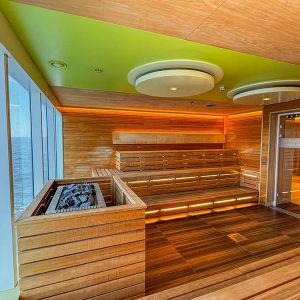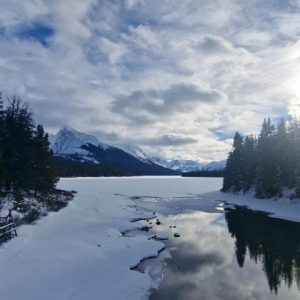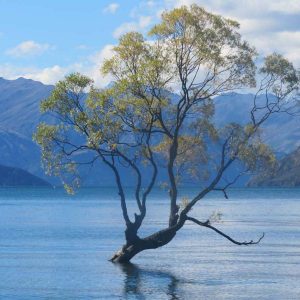“Are you romantic?” the woman asked, as we met for the first time. Her English was stuttering, thanks to her being Italian. We were somewhere remote, 50 miles south of Rome and deep within Latina province. The woman was Bianca, a local who had been accompanying travellers for many decades. She knew a lot about plenty.
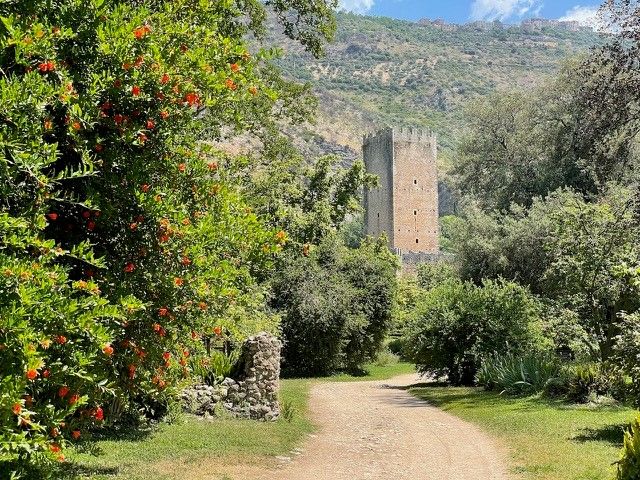
“Afraid not,” I replied, shaking my head vigorously, in case I was misunderstood. It was the last thing I was expecting anyone to ask, however renowned Italy may be for love. “Why do you ask?”
“This place, the Garden of Ninfa, is for romantics. Some say there is nowhere more loving.” She indicated around her as we stood under a boxelder tree. For a moment she pondered and then pointed at the dry earth between us. “That is despite our warming climate,” she added, frowning as she spoke.
Europe was ablaze, climate change uncontrollable, and yet somehow the 260-acre Garden of Ninfa was surviving, thanks to a humid microclimate and its own bubbling River Ninfa. Around us were many flowers in bloom, fluttering gently in a tiny breeze, so gently that even I felt my stress levels falling. It was clear Ninfa was somewhere special.
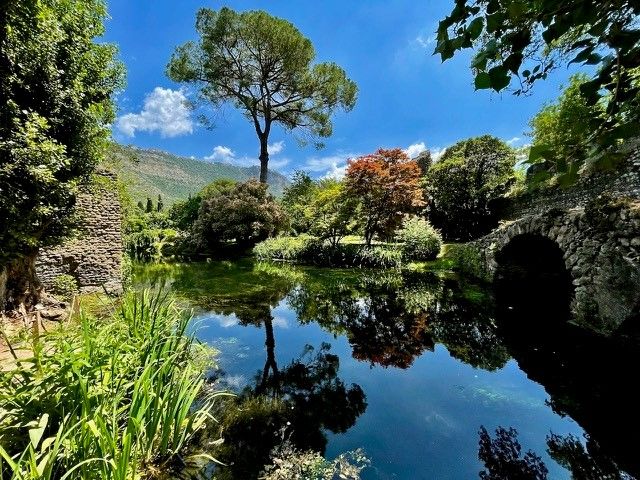
The name was earned from an island temple dedicated to nymphs in a small lake within the garden. Nymphs, it is said, are normally female, and live in mountains, springs, and grottoes. The nearby Mount Lepini, rich in limestone, may be the home of the peregrine falcon, griffon vulture and Apennine wolf, but it may also harbour nymphs, although I had yet to see one.
Nymphs apart, and I may be a useless romantic, once our stroll through the garden began, my guide in full torrent pointing out this and that, I was rapidly converted. The garden was utterly peaceful, well-tended, and extremely fertile. There was a town there once, too, now in ruins. It was likely pre-Christian, but was destroyed in the 12th century by Barbarossa, its 150 houses, as well as churches, bridges, hospices, castle, and town hall being razed to the ground. The 1400-metre length of defensive wall made no difference.
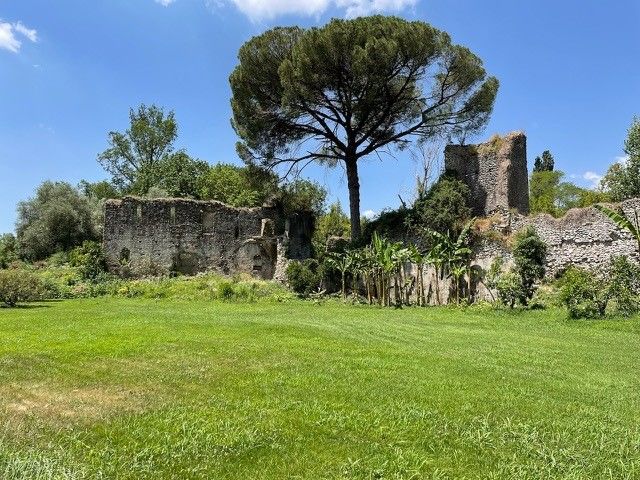
By the 16th century Ninfa was repopulated, and gardens were constructed. They did not last long as the surrounding marshes expanded, swallowed up the gardens, and malaria arrived. Ninfa was once again abandoned, its last mill being deserted by the mid-18th century.
It took until 1921, when Gelasio Caetani, the son of the wonderfully named Lady Ada Bootle-Wilbraham, created the Garden of Ninfa in what was known as the English style. English gardens were popular in those days, as they attempted to present an idealised view of nature and sought to replace the formal and symmetrical French style, widespread until that time. For an English garden, there was invariably a lake, always a bridge, groves of trees, often temples and usually ruins. The Garden of Ninfa shows them all.
The garden houses more than 1300 different species of plant, flower, and tree, plenty of them imported. There is a ton of bamboo. Ninfa is also on the route for many birds migrating between Europe and Africa, which is why over 150 species make Ninfa their home. I was not disappointed when an enormous heron took flight from the water before me. It was rapidly aloft without the tiniest splash as evidence.
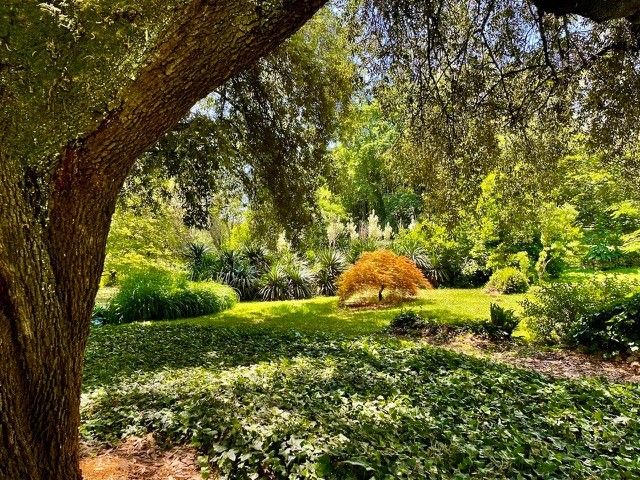

“Probably after one of our trout,” said Bianca, as we watched the bird flying only centimetres from the lake’s surface. The heron had clearly spotted something we could not see.
“And up there,” Bianca pointed, high towards the sky.
I looked up. A peregrine falcon was benefiting from a hidden thermal and seeking out its prey. It was biding time, before plummeting at incredible speed – 242 miles per hour (389 kms/hr) has been recorded – as it closed for the kill. Peregrines are said to have eyesight that is eight times better than mankind’s and can see their prey from a three-kilometre distance. We waited a while to see what the falcon would do, but it continued circling and shallowly beating its pointed wings. I was glad not to be its intended target.

It is hard to stay unaffected after a visit to the Garden of Ninfa, even if you know nothing about gardening. I can barely tell the difference between rose, daffodil and palm tree. Yet I came away impressed, my limited knowledge enriched, and with an ambition to do better with my microscopic piece of land in northern England. It is no wonder the Garden of Ninfa is so popular and sad that its creator, Gelasio Caetani, is unable to witness the magic he created.
Visit Italy? Of course you should. But be sure the Garden of Ninfa is on the itinerary.
***
If you go…
Where it is
Via Provinciale Ninfina 68
04012 Cisterna di Latina
Latina (LT)
Call centre: +39 (0)773 1880888 (Friday 1400-1800hrs; Saturday, Sunday, public holidays 0900-1800hrs)
Web: https://www.giardinodininfa.eu
There are some official opening days, where the gardens are open to the public (entry fee presently 15.75 euros) but be sure to book beforehand. The entrance to the park is divided into time slots and regulated exclusively by guided tours. Each visit lasts about an hour. It is also possible to have individual, private tours on other days but these are considerably more expensive and, again, require booking ahead. Accompanied minors (under 12 years old) are free.
Places for disabled (severely disabled, >75%) are always guaranteed (plus an accompanying person), regardless of the availability of time slots.
Getting there
The area is not served by public transport, and can only be reached by one’s own means, although it is possible to reach the Garden of Ninfa by train and taxi service from the nearby Latina Scalo railway station. See: https://www.giardinodininfa.eu/pages/dove-siamo
Road
Most drive or go by coach. The distances are:
Rome (76 kms); Naples (196 kms); Florence (327 kms); Bari (396 kms); Milan (626 kms).
Rail
From central Naples or Rome Termini there are regional and intercity trains that stop at Latina Scalo station. From there it is possible to reach the Garden of Ninfa by taxi, which is 7 kms away. See: https://www.rome2rio.com/map/Rome-Airport-FCO/Garden-of-Ninfa#r/Train
Radio Taxi Latina: tel. +39 (0)773 1881 – also active on Sundays
Air
Fly to Rome (FCO) take a train from there to Roma Termini and from there to Latina Scalo railway station. Then bus or taxi.
Bus
Buses leave Latina Scalo railway station every 2 hours for Norma, which is 1.4 kms from the garden.
Parking
At the entrance to the garden there is ample free parking for cars and buses.
Accessibility
I pushed someone in a wheelchair throughout the tour of the garden. There were one or two bumpy spots but generally it was fine.
Places to eat
1. De Novo e D’Antico, Via Santa Margherita 1, Cori LT
Tel: +39(0)69678949
Email: info@denovoedantico.it
2. La Taverna Dei Golosi
Via dei Lavoratori 133, 04010 Cori LT
Tel: +393775345008; +393389388063
Web: https://www.facebook.com/La-taverna-dei-golosi-273937669606409/?ref=py_c
3. La Piccola Fontana
Via del Corso 2, 04010 Norma, Italy
Tel: +39 (0)773 353921
Places to stay
- Cincinnato Wine Resort, Via Stoza 3, 04010 Cori LT (bed & breakfast)
Tel: +39 333 589 5118
Email: wineresort@cincinnato.it
2. Casadolcecasalatina, Via Congiunte Sx 63, 04100 Latina, Italy (bed & breakfast)
Tel: +39 389 434 1534
Web: https://www.hotelsitaloweb.com/casadolcecasalatina/
3. Hotel Miramare, Via Lungomare 3, 04100 Capo Portiere LT, Italy
Tel: +39 (0)773 273470
Web: https://www.hotelmiramarelatina.it/en/
Email: info@hotelmiramarelatina.it
Other things to see
1. The Caetani Castle of Sermoneta
Web: https://www.giardinodininfa.eu/collections/castello-caetani-di-sermoneta
2. Parco Archeologico di Norba
Web: https://comune.norma.lt.it/contenuti/38972/antica-norba
3. Abbazio di Valvisciolo
Web: https://www.atlasobscura.com/places/valvisciolo-abbey
More information
Giardino di Ninfa: https://www.giardinodininfa.eu. Multiple translations are available
Garden of Ninfa: https://en.wikipedia.org/wiki/Garden_of_Ninfa

